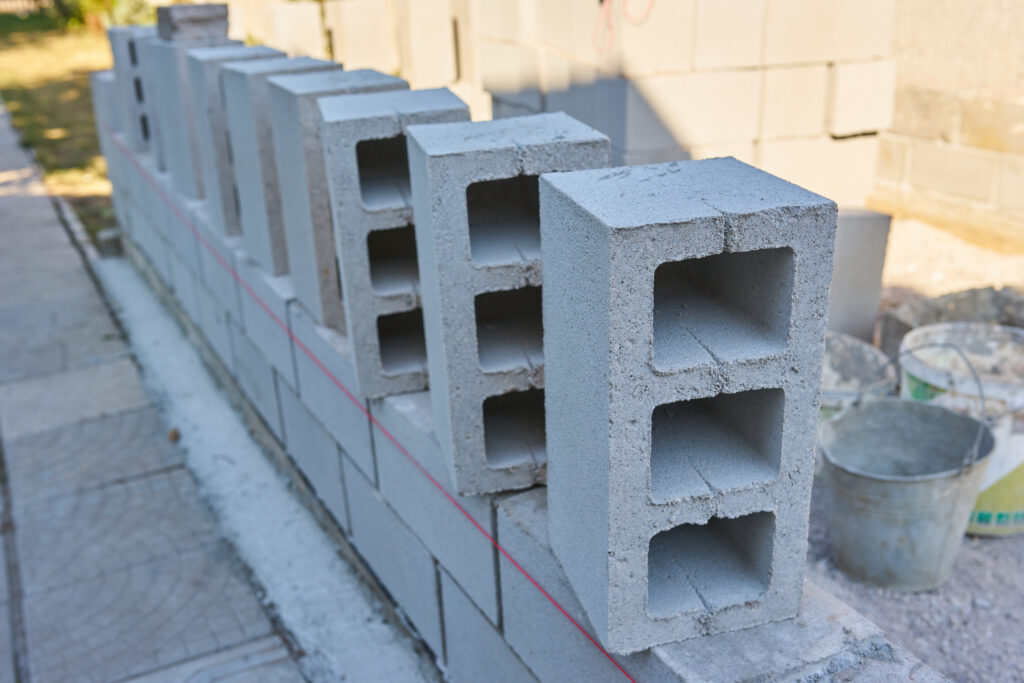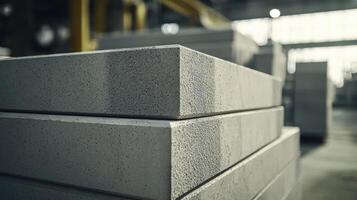AAC Blocks: Everything You Need to Know About Autoclaved Aerated Concrete

In today’s construction world, there’s a growing need for building materials that are sustainable, cost-effective, and high-performing. One material that has really made a name for itself is AAC blocks. These blocks are not only lightweight and eco-friendly, but they also offer amazing thermal insulation, making them a famous choice for all kinds of projects—residential, commercial, and industrial.
In this blog, we will learn everything about AAC blocks, including what they are, how they’re produced, their advantages and disadvantages, and the best applications for them.
What Are AAC Blocks?
AAC stands for Autoclaved Aerated Concrete. It’s a lightweight, aerated concrete building material that was invented back in the 1920s. The production of AAC blocks involves a mix of fly ash (or sand), cement, lime, gypsum, water, and a touch of aluminum powder. It is a unique cellular structure, created through a chemical reaction that generates tiny air bubbles throughout the block.
These air pockets help to lower the material’s density while still maintaining its strength and insulation, making AAC blocks lighter and more efficient compared to traditional bricks or concrete blocks.
How Are AAC Blocks Made?
Creating these blocks is an interesting process that involves several key steps:
Raw Material Mixing: First, we mix fly ash (or sand), cement, lime, gypsum, and aluminium powder with water in the same proportions.
Transferring and bubbling: Next, this mixture is poured into moulds. Here, the aluminium powder reacts with lime, releasing hydrogen gas and forming a foamed, aerated structure.
Initial setting: The mixture is then left to set and slightly harden in the moulds for a few hours.
Cutting: Once it has set, the mix is taken out of the moulds and cut into the required block sizes using wires or automatic machines.
Final hardening: The cut blocks are then cured in an autoclave under high pressure and temperature (around 180°C) for 12–14 hours. This essential step gives the blocks their strength and durability.
Quality Checking and Packing: Finally, the finished product is tested for strength, thickness, and consistency before being packed up and sent off to construction sites.
Key Properties of AAC Blocks
- Thickness/density: 550 – 700 kg/m³
- Compressive Strength/Load-bearing capacity: 3 – 4.5 N/mm²
- Thermal Conductivity: 0.16–0.18 W/mK
- Fire Resistance: Up to 4 hours
- Sound Insulation: 35–40 dB for a 200 mm thick wall
- Water Absorption: Less than 10%

Advantages of AAC Blocks
- Lightweight
AAC blocks are significantly lighter—they are three times lighter than traditional clay bricks. This reduction in weight makes the overall structure easier and faster to handle and install. - Thermal Insulation
Thanks to their air-filled cellular structure, AAC blocks provide amazing thermal insulation. Buildings constructed with AAC require less energy for heating or cooling, which can lead to lower electricity bills. - Fire Resistance
AAC blocks are non-explosive and can survive high temperatures for several hours, making them a great choice for areas open to fire. - Earthquake Resistance
The lightweight design of AAC blocks improves the earthquake resistance of structures. Their lower mass helps to minimise the forces experienced during earthquake-related events. - Sound Insulation
AAC blocks are great for soundproofing, making them best for places like hospitals, schools, and homes in busy areas. - Faster Construction
Thanks to their large size and ease of handling, AAC blocks are quicker to install. You can easily cut, drill, nail, or mill them with standard tools. - Eco-Friendly
Made from industrial waste like fly ash, AAC blocks are produced using less energy and release minimal greenhouse gases. Plus, they’re 100% recyclable, helping to cut down on construction waste. - Consistency and Regularity
Manufactured in controlled factory conditions, AAC blocks boast a consistent size, shape, and surface finish, which helps reduce the need for binding agents and plaster. - Pest and Mold Resistant
Since they’re inorganic and non-spongy , AAC blocks don’t support the growth of mold, fungus, or pests like termites.
Disadvantages of AAC Blocks
- Initial Cost
AAC blocks come with a higher price per block compared to traditional clay bricks. However, this cost is often balanced out by savings in construction speed, cement, and energy. - Limited Local Availability
Not every region produces AAC blocks, which can lead to increased transportation costs and longer delivery times. - Breakability
These blocks are more delicate than regular bricks, making them prone to damage during handling if not treated with care. - Water Absorption
While these blocks absorb less water than some materials, they still need proper waterproofing for external walls. - Special binding agent Requirement
Instead of traditional cement paste, these blocks need thin joint paste (adhesive), which might not always be available on-site.
Applications of AAC Blocks
Autoclaved aerated blocks are adaptable and can be used in various construction projects, including:
Residential Buildings: Walls, partitions, and roofs
Commercial Buildings: Offices, malls, showrooms
Industrial Structures: Factories, warehouses
Institutional Buildings: Schools, hospitals, government offices
High-rise Buildings: Ideal due to their lightweight and insulation properties

Difference between AAC Blocks and Clay Bricks
| Feature | AAC Blocks | Clay Bricks |
|---|---|---|
| Weight | Light (550–700 kg/m³) | Heavy (1600–1800 kg/m³) |
| Thermal Insulation | High | Low |
| Fire Resistance | Up to 4 hours | Up to 2 hours |
| Size | Larger, uniform | Smaller, irregular |
| Construction Speed | Faster | Slower |
| Eco-Friendliness | High (uses fly ash) | Moderate (uses natural soil) |
| Strength | 3–4.5 N/mm² | 3–4 N/mm² |
| Cost (per unit) | Higher | Lower |
| Labor Requirement | Less | More |
Is AAC the Future of Construction?
With the increasing demand for sustainable and energy-efficient building materials, these blocks are quickly becoming a go-to option in urban construction. Their eco-friendly characteristics, impressive insulation, and quicker construction times make them a perfect fit for the future of green buildings and smart cities.
Although the upfront cost might be a bit higher, the long-term savings on energy, maintenance, and materials make autoclaved aerated blocks a wise investment for current construction projects.
Conclusion
These blocks stand out as an ideal balance between strength, sustainability, and smart engineering. Their lightweight design, outstanding insulation, and fire-resistant features are changing the planning of building design and construction. While there are some challenges, like delicacy and a higher price tag, the benefits typically overpower the drawbacks. Whether you’re constructing a home, an office, or a towering high-rise, AAC blocks offer a versatile, durable, and eco-friendly solution for today’s construction needs.
Benefits of Eco-Friendly Bricks: A Smart Choice for a “Greener Future” Guide—2025
Read more of my blogs to understand more about bricks!